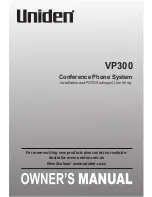
350
Entering T
e
xt
M
odify
ing an
d Sto
ring
C
ommon Ph
ra
se
s
Entering text by quoting personal data or
the phonebook entries
In the Text Entry (Edit) screen for an e-mail message
or “Text memo”, you can use this procedure to enter
the name, reading, phone number, e-mail address,
street address, birthday or memo stored in the
phonebook or in “Own number”.
●
Data cannot be quoted from some Text entry (edit)
screen.
1
Text entry (edit) screen (P.344)
p
(FUNC) “Quote data”
“Phonebook” or “Own data”
■
When “Phonebook” is selected
Select “Group search” or “Column search”.
Search the phonebook for the entry to be
quoted.
Searching the phonebook
→
P.105
■
When “Own data” is selected
Enter your security code.
2
Use
c
to select a checkbox (
□
)
3
o
(Finish)
<Store common phrases>
Modifying and Storing Common
Phrases
You can store frequently used phrases as common
phrases in advance so that they can be retrieved
when entering text.
●
The common phrases are stored in 5 folders.
Folders 1 and 2 each contain 10 pre-installed fixed
common phrases.
→
P.371
Folders 3 to 5 each can store up to 10 original
common phrases.
●
You can modify the fixed common phrases.
●
You can rename the folders to suit to the uses of the
common phrases they contain.
Composing a new common phrase
1
i38
The “Common phrase folder list screen” appears.
2
Select a folder
The “Common phrase list screen” appears.
3
Highlight “<Not stored>”
o
(Edit)
Enter the common phrase
You can enter up to 64 full-pitch or 128 half-pitch
characters.
N
z
Common phrases can be used in the following Text Entry
(Edit) screens:
・
Text memo
・
i-mode mail subject
・
Common phrases
・
i-mode mail message
・
Common phrase folder name
・
i-mode mail header
・
Enter auto sort setting subject
・
i-mode mail signature
・
Enter mail search subject
・
i-mode mail quotation marks
・
Edit i-mode text box
・
Schedule
・
Edit i-
α
ppli text
・
ToDo
・
Dictionary
・
Wake-up message
z
Fixed common phrases are displayed (represented) differently
depending on the text entry mode as shown below. Original
common phrases and fixed common phrases that have been
modified are displayed as stored regardless of the text entry
mode.
・
5-touch input, T9 input : Displayed as kanji/hiragana in Kanji/
hiragana input mode.
Displayed as half-pitch katakana in other
input modes.
・
2-touch input
: Displayed as kanji/hiragana in full-pitch
input mode.
Displayed as half-pitch katakana in half-
pitch input mode.
(In English mode, the same fixed common phrases are
displayed regardless of the input mode)
DocomoTaro
DocomoTaro
090XXXXXXXX
Phonebook
03XXXXXXXX
090XXXXXXXX@docomo.ne.
1450071X−XXX−XXDenench
A phonebook entry
Select
Finish
N
z
When you quote a street address, the postal code “
〒
” symbol
and “-” are not quoted.
N
z
You can use pictographs in common phrases for mails. When
you send the mail to devices of other mobile phone companies
(au/Vodafone/TU-KA), the pictographs are automatically
converted to similar ones on the other party’s device.
However, pictographs may not be displayed properly
depending on the model or functions of the other party’s
mobile phone.
Common phrase folder list
Common phrases
Folder 4
Folder 5
Folder 2
Folder 1
Folder
3
FUNC
Select
Function menu P.351
Common phrase list
Folder 3
<Not stored>
<Not stored>
<Not stored>
<Not stored>
<Not stored>
<Not stored>
<Not stored>
<Not stored>
<Not stored>
<Not stored>
FUNC
Select
Edit
Function menu P.351
Содержание FOMA N702iS
Страница 54: ......
Страница 252: ......
Страница 263: ...261 i channel i channel 262 Using Channel List to Display Sites 263 Setting i channel 264 i Channel settings...
Страница 300: ......
Страница 340: ......
Страница 370: ...Appendix Using the FOMA Terminal with External Devices Troubleshooting Pictographs List 368 Reading Reading Reading...
Страница 403: ...401 Index Quick Manual Index 402 Quick Manual 412...
Страница 413: ...Index Quick Manual Index 411...
















































